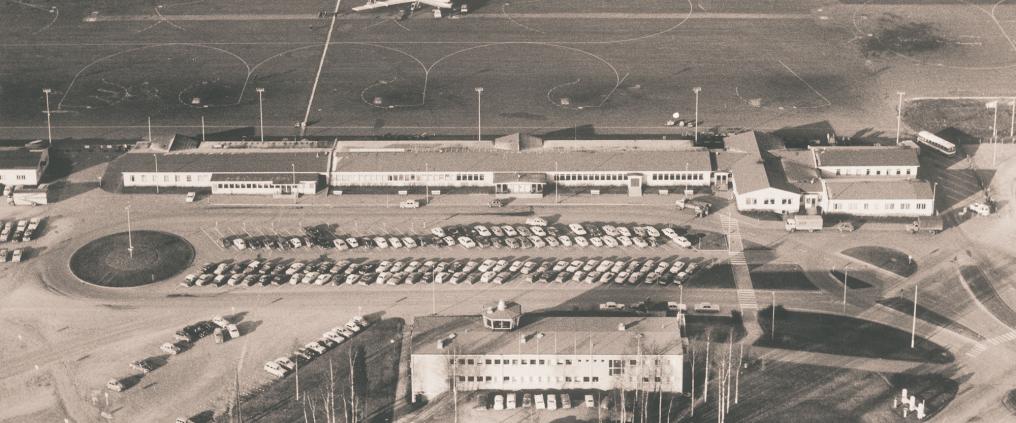To celebrate Finland’s centenary, Finavia is publishing a ten-part series on the history of Finnish aviation from the last ten decades. This installment focuses on the 1960s.
The 1960s were a time of urbanization and economic growth in Finland. The road and highway network was developed, and cars became more and more common, challenging airplanes as a mode of transportation to the more remote areas of the country.
”In the 1950s, the airport was still a necessity in the more isolated regions, but in the 60s this changed as roads were built and Finns began to own more cars,” says Valeri Saltikoff, a specialist from the Finnish Aviation Museum.
Still, flying also grew in popularity, as Finnish people’s standards of living rose and travel abroad became a more common leisure activity.
Koivulahti and Maarianhamina accidents
However, in start of the century, the reputation of aviation as a transport mode took two bad hits. On the 3rd of January 1961 Aero’s Douglas DC-3 plane flying from Kronoby and Vaasa crashed, resulting in the death of all 22 passengers and three members of the crew.
”Koivulahti is still the most disastrous flight accident of Finnish history.”
”Koivulahti is still the most disastrous flight accident of Finnish history,” Saltikoff says. ”It was especially unfortunate as investigations later proved that both the plane’s captain Lars Hattinen and the copilot had been heavily intoxicated at the time of the accident.”
Hattinen had served in the Second World War as a successful fighter ace, and some have suspected that trauma from the war may have contributed to his risky behavior.
Less than three years later, there was also another disastrous accident, when a plane landing at Maarianhamina airport crashed, killing 22 people.
According to Saltikoff, though the accidents drew a lot of media attention, they only had a temporary effect on the popularity of flying. After a slight slump, passenger volumes continued to grow throughout the 1960s.
Keihänen flies Finns to ”Mallorca with one mark”
The mid-1960s also marked the beginning of Finnish package holiday tourism on a larger scale, when Kalevi Keihänen's Keihäsmatkat travel agency started to offer cheap charter flight to Southern destinations.
The slogan of Keihäsmatkat [Spear Travel] promised to take Finns “to Mallorca with one mark, and to the Canary Islands with two”. The idea being that if you saved one mark each day for a year, you’d be able to afford a holiday to Mallorca, and with two to the Canaries.
The mid-1960s also marked the beginning of Finnish package holiday tourism.
"Keihäsmatkat's main competitive advantage was underpriced flights, especially for last minute departures, which the company sometimes sold at a loss. Other travel agents even sued the company for dumping prices, but Keihänen won the suit and this so-called 'travel agency war'", Saltikoff explains.
In addition to cheap flights, cheap booze was also part of the Keihäsmatkat brand.
”During the flights, passenger were served home-brewed moonshine, which Keihänen ordered from Spain."
Keihänen was also a Finnish tabloid media celebrity known for his colorful behavior and eccentric outfits – he could often be seen in just a long chinchilla fur coat and a pair of swim trunks.
”In the early 1970s, Keihänen even started his own airline Spear Air, which had two planes called Härmän Jätkä and Härmän Mimmi (roughly translated as Country Dude and Country Chick). A major part of the business was selling tax free liquor and tobacco during the flights as duty free sales was not yet allowed at international airports. However, in the aftermath of the oil crisis of the early 1970s, Keihänen’s businesses quickly went bankrupt,” Saltikoff says.
Before the plunge, Keihäsmatkat – according to Keihänen's own account – flew up to 100 000 Finns yearly to the South, and the company was undoubtedly a major factor in the democratization of Finnish air travel. By the end of the 1960s, vacations in Southern destinations had become an established phenomenon among regular Finns, not just the elite.
It was determind that the plane had gone into an uncontrollable spin due to a steering error.



